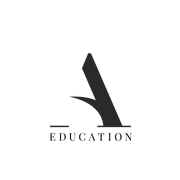How I Shot That: Film with Front Flash
Hi friends! So often I've found that friends and colleagues will ask me specifics about how I shot a certain image, whether that's what camera, lens, film stock, lighting, etc. In honor of these questions I receive, I'm starting a new series call "How I Shot That", that will feature images in various scenarios, and the exact ways in which I shot each image.
The first image we'll be diving into will be the wedding reception image below, shot at a recent wedding in Jekyll Island, Georgia:
CAMERA
So the first bit of information you'll need is the camera that this was shot on, which can be found HERE...and for under $50! The Holga series of cameras are essentially cheap toy cameras. If you're looking for a way to get into shooting film, this is one of the easiest and cheapest ways to do so.
LIGHTING
Secondly, you'll need to know the exact lighting conditions in the room. This image was shot at night, in a very dark room with only a small video light shining directly behind the bride (seen in the upper righthand corner of the image). Whether shooting digitally or with film, a flash was a necessity.
FLASH
Which brings us to the flash used in this image. You'll be happy to hear that this flash is under about $20. Generally, these flashes are cheaply made (and sometimes need to be replaced after 6-12 months of usage).
The reason I choose to use a cheap manual flash is both to have a dedicated flash for this camera (not taking away from my digital cameras), and also to match the build and weight of the camera. Putting a regular, larger flash on this camera will make it extremely top-heavy, and harder to handle.
HERE is the exact flash I used for this image, although I highly recommend considering the
Canon430 Flash if you're going to be shooting the Holga often.
FILM STOCK
Next, we'll hit on the film stock used in this image. The Holga camera linked above is a medium format film camera, meaning it only takes 120 film. The film stock, in particular, that I used for this shot was Kodak Portra 400.
SETTINGS
Next, we'll hit on the settings I had and my positioning with this shot. The Holga camera does not have many options, but it's important to know what those few options were set to:
-
N, not B. This "N" feature is found on the bottom of the camera, and will ensure your images don't turn out super blurry.
- "Sunny" feature. This gives the camera an approximate f-stop of F/11, ensuring more is in focus.
- I was approximately 3-feet away from my subject with the camera pointing directly at the bride.
- The "distance" feature was set to the "one person", which means that your subject is about 3 feet away.
* Want a full guide on everything I know about shooting The Holga for only $29? Check out The Holga Guide!
LAB PROCESSING
And since we're talking about film, this image was processed by PhotoVision Film Lab on a Frontier scanner, however I normally process most of my Portra 400 on a Noritsu scanner.
And that's it! Everything you need to know about this image, completely dissected. Please leave a comment if you have further questions.
xx. Abi


Chantii, I would set your flash on full power, or at least close to full power. I always use Manual, never ETTL. I find that ETTL never gets the flash quite bright enough for the film I’m using. Hope this helps!
Looove your work!
I have another question with the flash:
What settings do you use? I have a canon 430 flash for my digital camera that I would also use on the film camera. But I dont really get what I need to set on the flash? Or do you just use the ETTL mode when shooting with your film camera?
Love this series Abi, and this shot! Beautiful as always. ;)
This was so helpful! thank you!